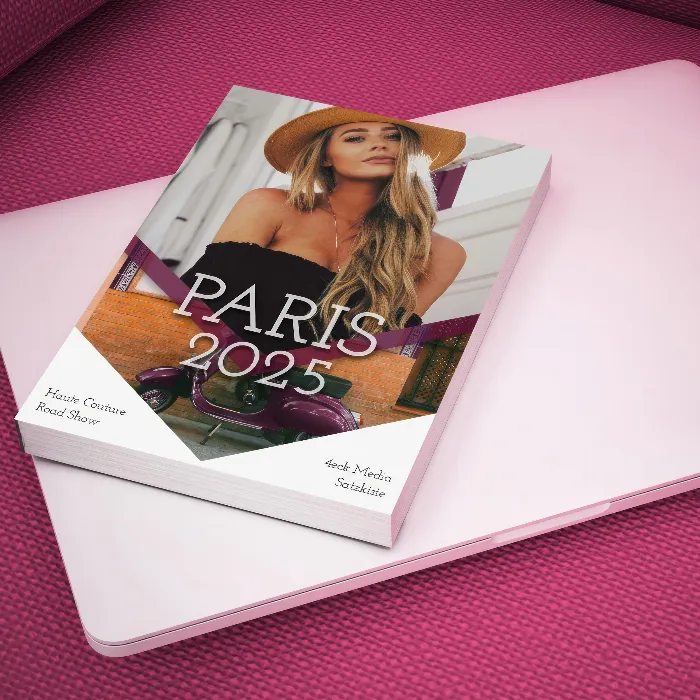Adobe InDesign is a powerful layout program that helps you efficiently manage even complex large projects. One of the first challenges you will face is the import of text. How do you bring content from Word or other word processing programs into your InDesign document? There are various methods, and in this tutorial, you will learn about the best import options.
Key insights
- Copy & Paste is simple, but can lead to formatting loss.
- Using the RTF format helps with the transfer of information.
- Import options give you a lot of control over the import process.
Step-by-step guide
Step 1: Open your template Before you start importing text, open the provided template. You should see a blank document that offers you plenty of room for design. This way, no one will accidentally overwrite the template file, as it remains protected by the template system. The template is the foundation of your project, and it’s important to handle it carefully.
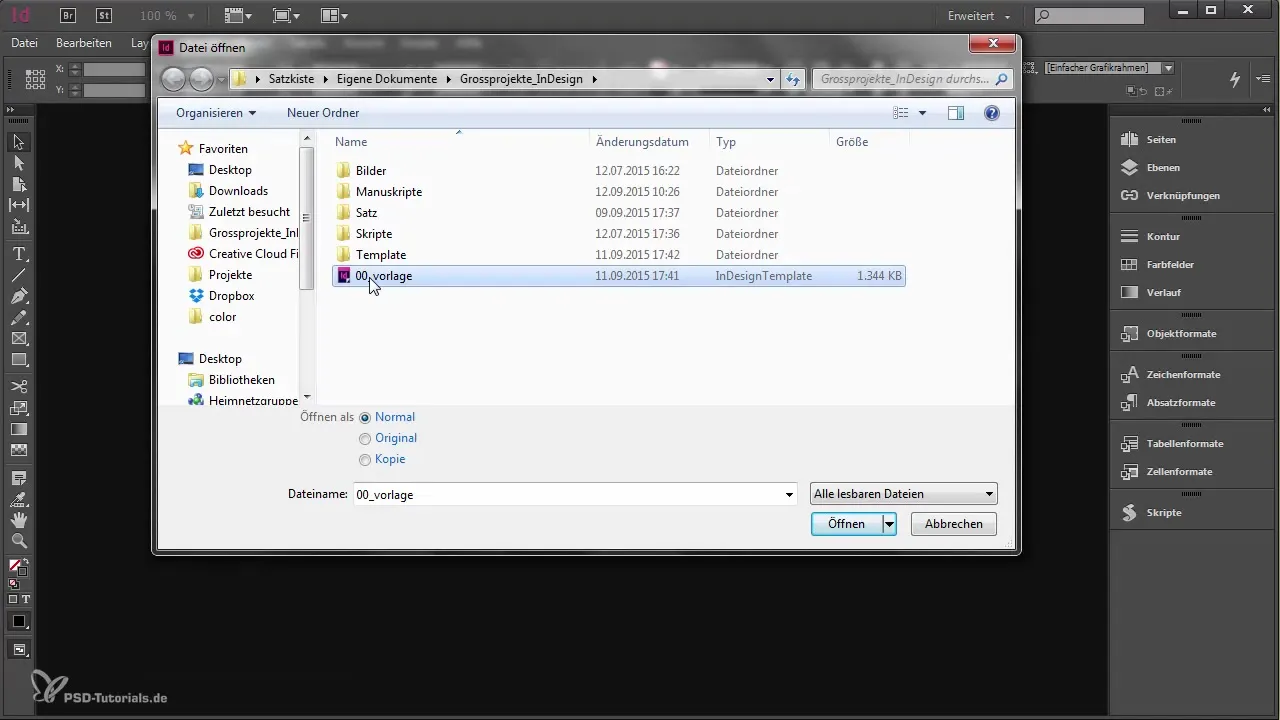
Step 2: Add new pages To start the import process, it is often necessary to add some new pages to your document. You can do this through the Pages panel in InDesign. Check if there is already a page labeled "Content". Add more content pages so that the texts can be well placed.
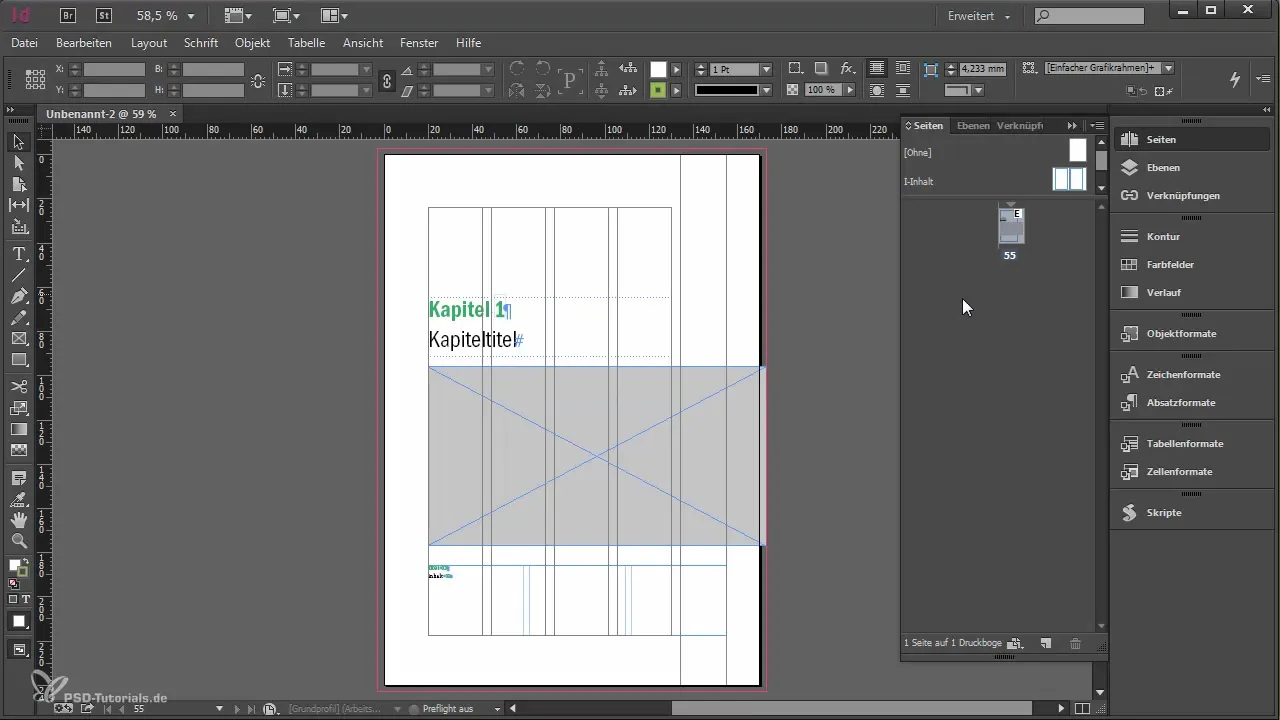
Step 3: Release text frame If you already have a text frame on the master page, you need to release it from the master page to access it. To do this, hold down the control key and the shift key while selecting the text frame. This allows you to place the text without the text frame remaining on the master page.
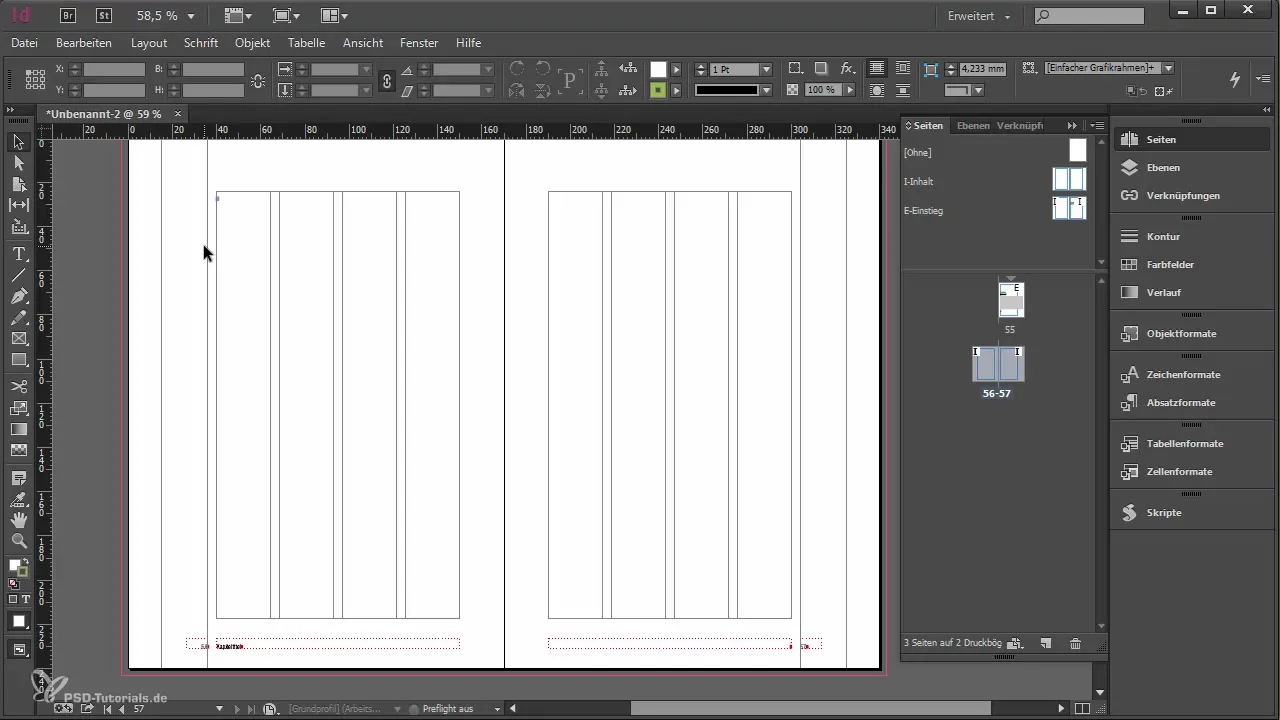
Step 4: Try Copy & Paste The simplest method to import text from Word is to copy and paste. Open your Word document, highlight the desired text, and copy it to the clipboard. Then paste the text into InDesign. However, note that this method often leads to a loss of formatting. Typically, you will receive standard plain text without additional styles.
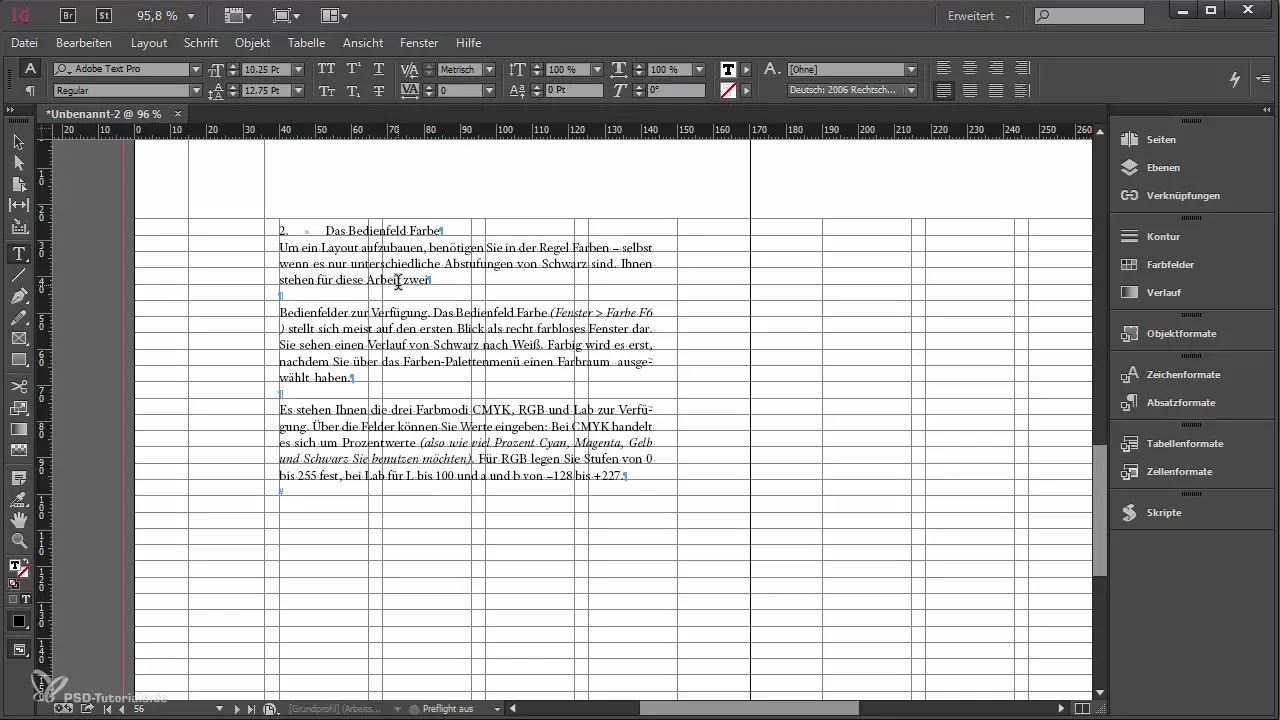
Step 5: Adjust clipboard options To preserve formatting, you should adjust the settings in the preferences. Go to the clipboard options in InDesign. Here you can set it to also include formatted text from Word. Change the template from "text only" to "all information". Now you can paste the text again, and you will notice improved formatting.
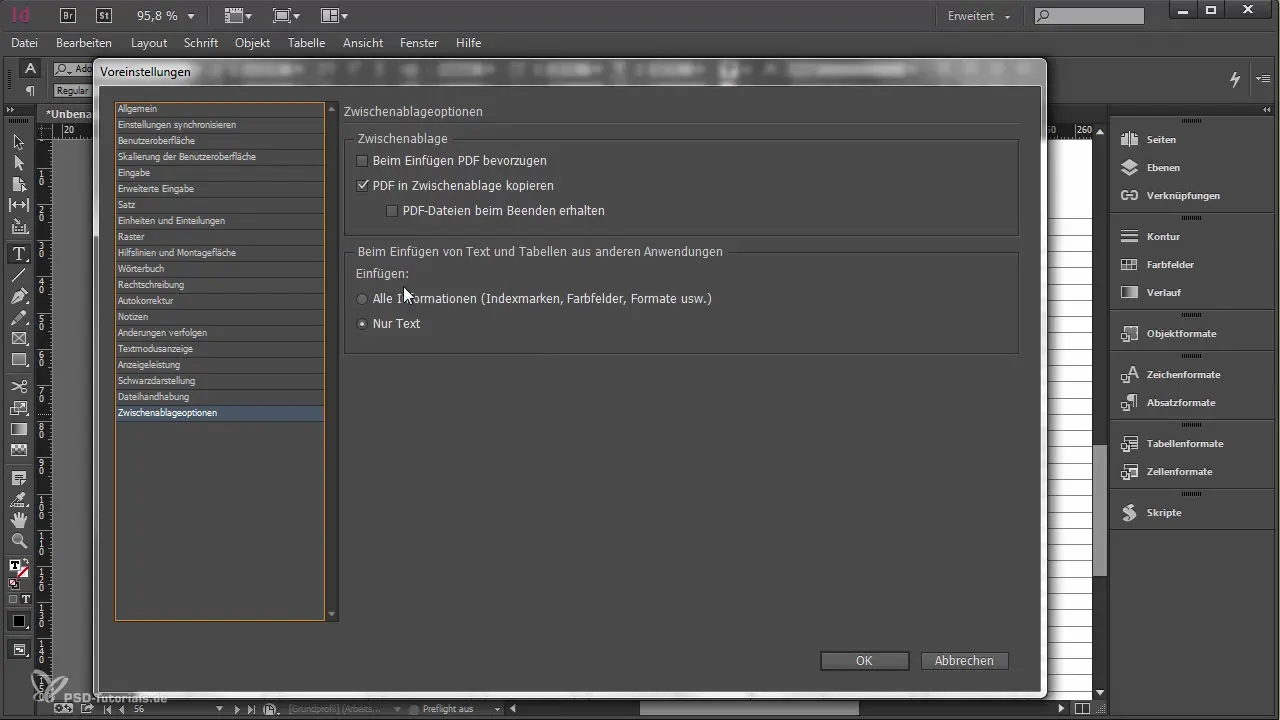
Step 6: Recommend RTF format Before proceeding, I recommend saving your Word document as an RTF file. The RTF format is often less error-prone and easier for InDesign to interpret than DOC or DOCX. Close the document as soon as you have saved it as RTF to continue with the import into InDesign.
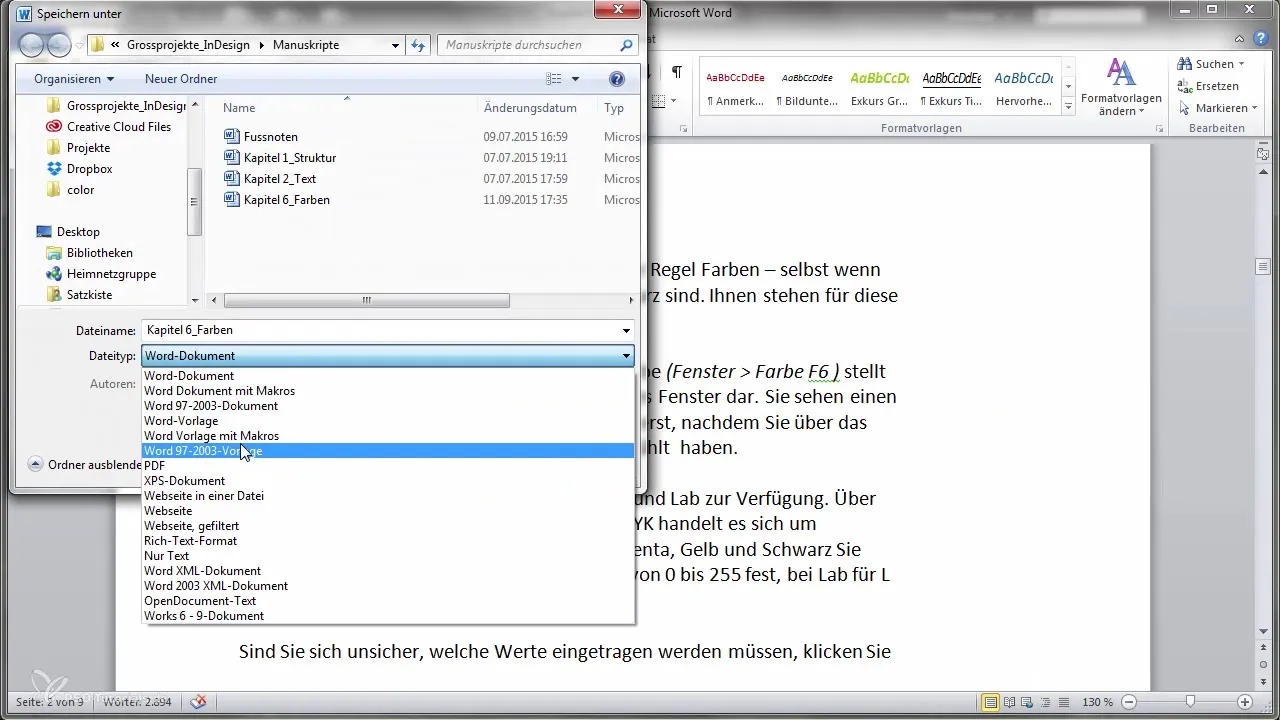
Step 7: Place file Now you can import the RTF file into InDesign. Go to "File" and select "Place". Search for and select your RTF file. Make sure that the import options are enabled to make any adjustments. This gives you the advantage of importing many settings and formats at once.
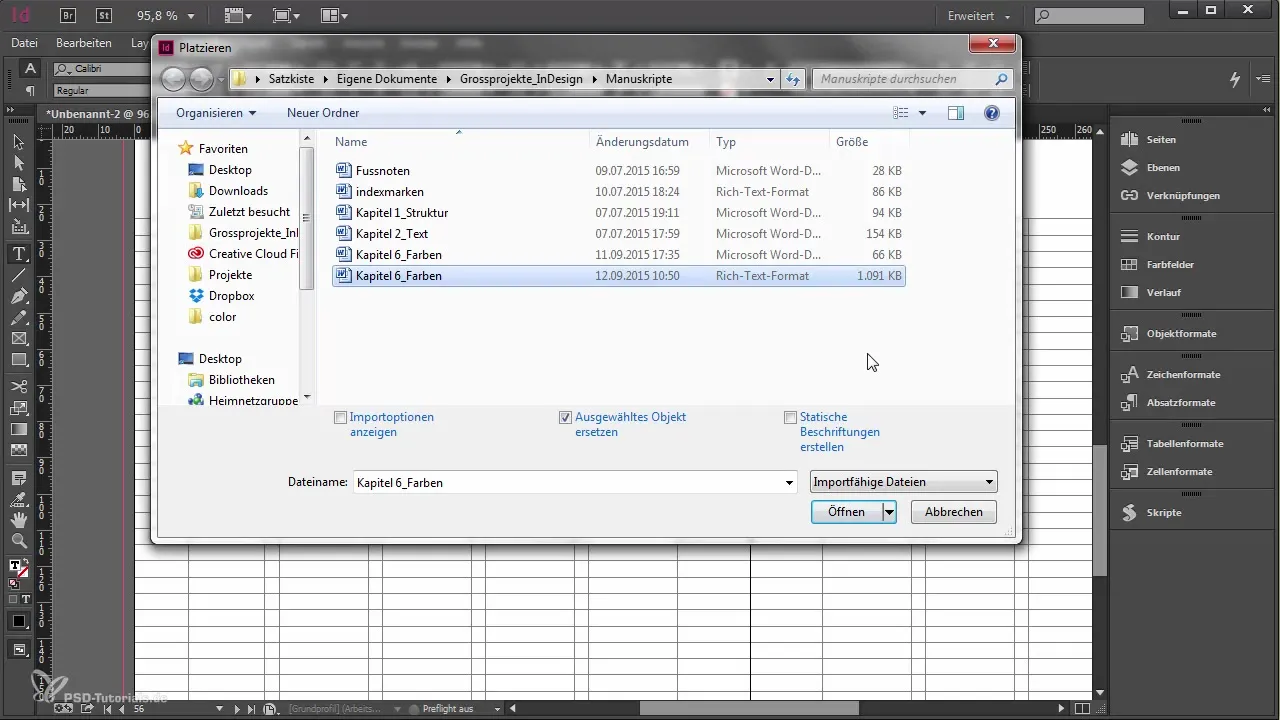
Step 8: Check import options Before you finalize the import, check the import options. Make sure you include relevant formatting, footnotes, and quotes. For graphics, you have the option to decide whether to include them or not. If it is a large project, it may be wise to skip the graphics to save storage space.
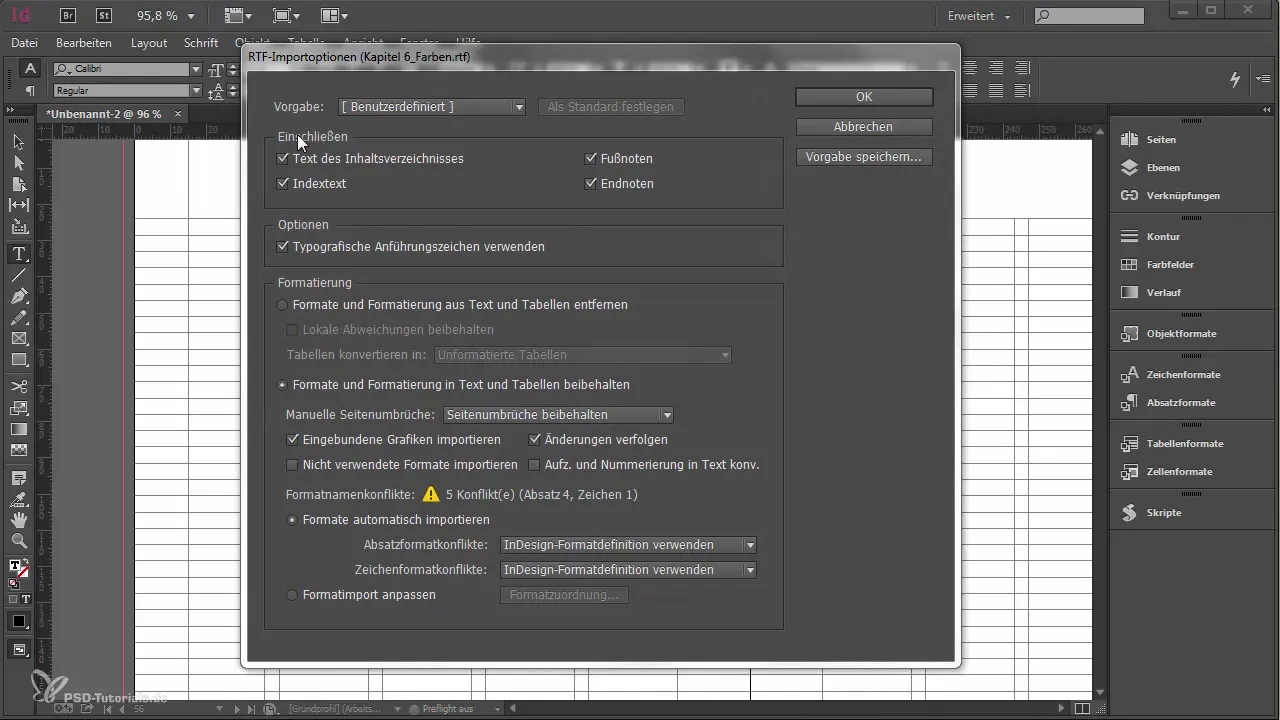
Step 9: Review results After the import, you should check your layout. You will see that names, tables, and text formatting were automatically transferred into your project. This demonstrates how powerful InDesign is when used with the right import methods. Also check the paragraph and character styles; they should all have been transferred correctly.
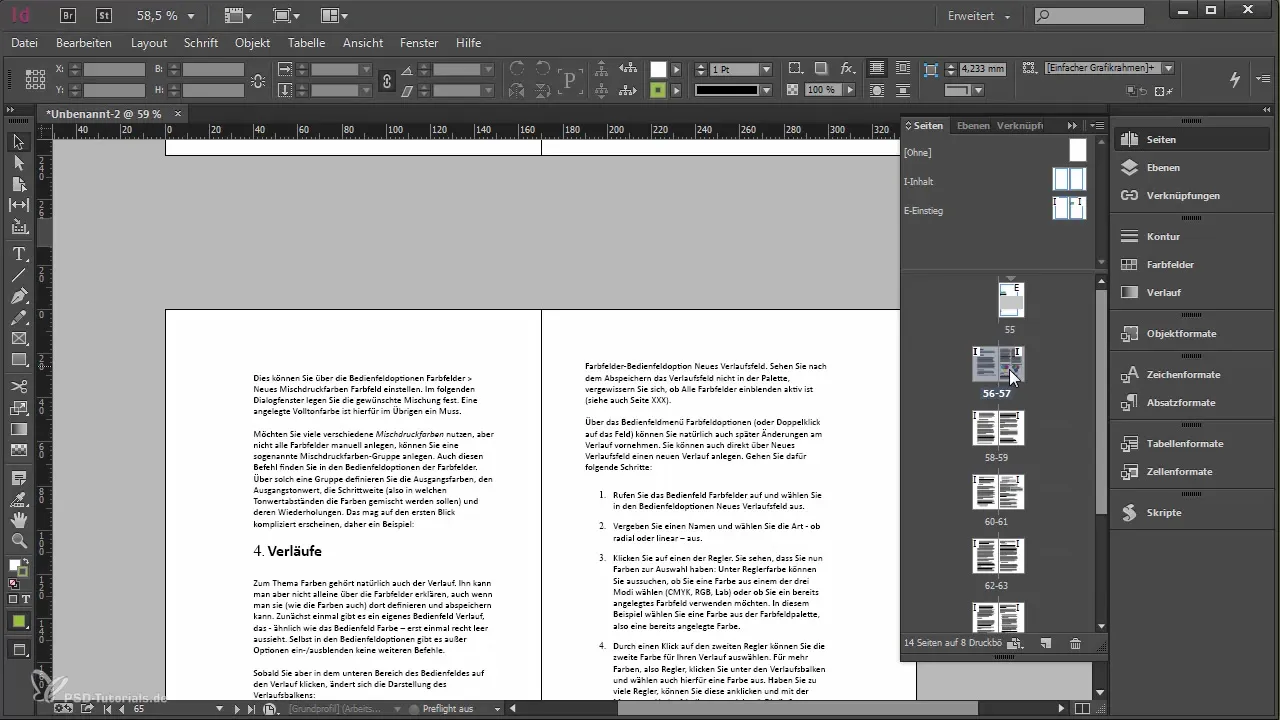
Summary – Large projects in Adobe InDesign: Text import options
In this tutorial, you learned how to efficiently import text from Word into InDesign. We discussed various methods and formats and highlighted the importance of the right settings. With these tools and techniques, you are well-equipped to master your large projects.
Frequently Asked Questions
How do I import text from Word to InDesign?You can import text from Word by Copy&Paste or using the "File Place" function.
Why should I use RTF instead of DOC?RTF is less error-prone and is better interpreted by InDesign.
What can I do to preserve formatting?Adjust the clipboard options in the preferences to include all information, including formatting.
Can I import graphics from Word?Yes, you can decide whether to import graphics from Word or not.
What are import options?Import options give you control over which elements and formats are adopted during the import into InDesign.
